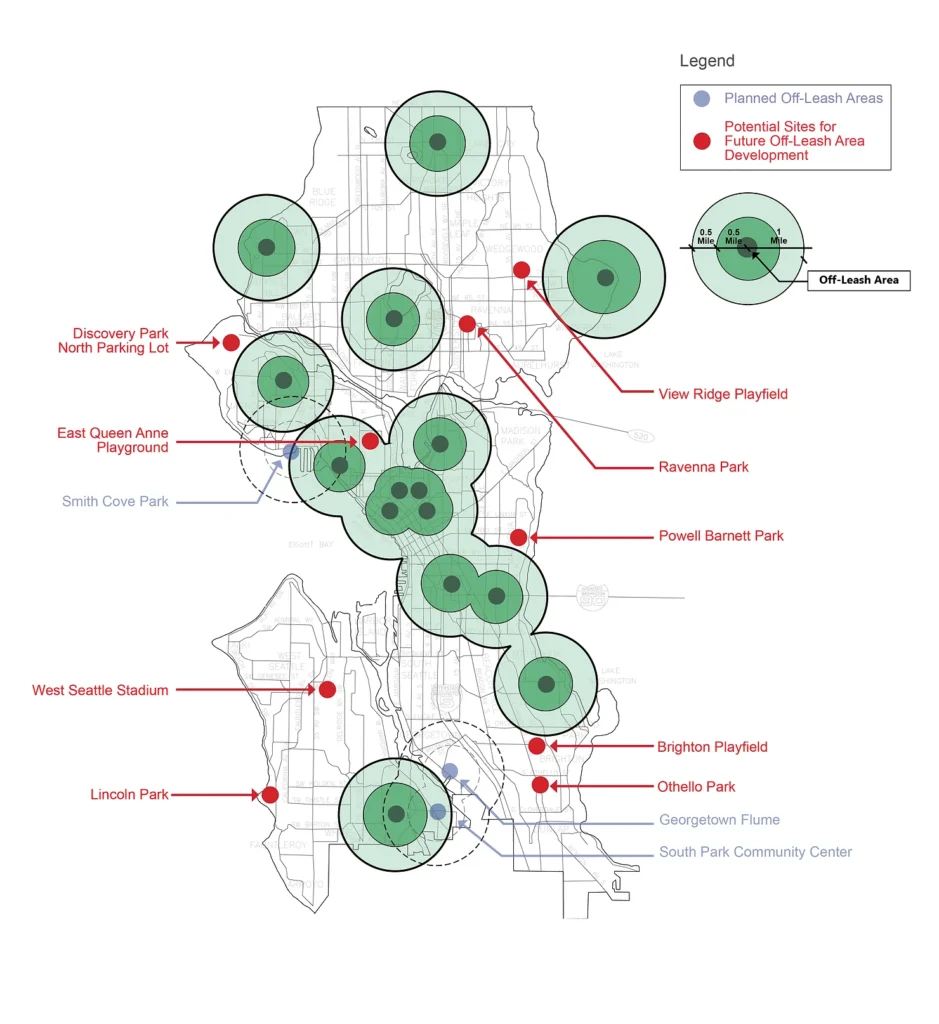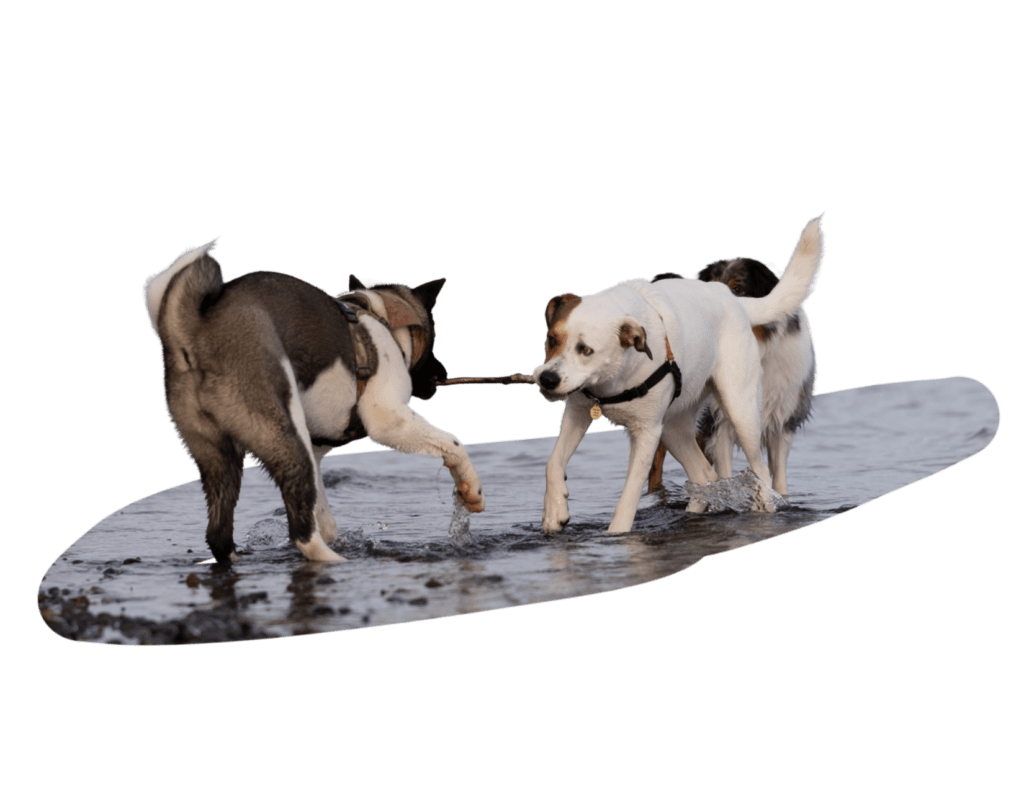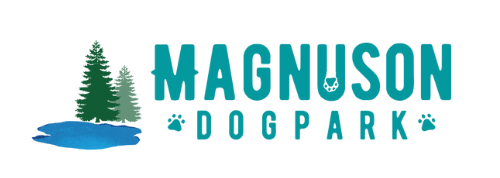By Jenn Scott

Seattle Animal Watch believes that the City of Seattle needs integrated and comprehensive animal welfare planning. Animal welfare is a factor in key issues affecting our growing city. It involves different departments that often compete for limited resources. Many citizens are not even aware of these issues and the challenges they involve.
An example is the ongoing creation and management of off-leash areas (OLA) by Seattle Parks and Recreation (SPR). The decision-making process must balance the needs of dogs, humans, wildlife, and natural spaces.
We’ve provided a summary of the issue and the concerns expressed by citizen advocates. While we do not have the expertise to take a position on the OLAs, the following conclusions are clear.
- Off-Leash Areas contribute to animal welfare. OLAs provide critical space for dogs, especially large ones, to exercise and engage with the outdoors. Off-leash areas contribute to the mental well-being of dogs, particularly in a city growing denser and with fewer open spaces. It is likely that OLAs contribute to human welfare as well, as they provide people a social outlet while exercising their pet.
- Enforcement efforts for dogs illegally off-leash in parks require a great deal of the City’s limited resources for animals. SPR’s 2017 People, Dogs & Parks Plan stated that 26% of Seattle dog owners admit to allowing their dogs to run off leash in areas where this is forbidden, such as ballfields, water areas, trails, tennis courts, and play areas. Data from both the Seattle Animal Shelter (SAS) and the City Attorney’s Office show that enforcement issues surrounding our Parks system demand almost the majority of SAS field officer time and that most City Attorney work related to animals is spent on citations for off-leash violations. The cost of this enforcement is less time for work on animal cruelty investigations, public education, and community outreach.
- OLAs are an example of Seattle’s citizens taking the lead on advocacy for animals and their welfare. While on the surface, it appears that Seattle does not have a visible and organized network to lobby for changes in our animal welfare laws and planning, citizens have been engaging with our local government, demanding change, and advocating for years on off-leash areas. They have also been providing and funding basic functions that Seattle Animal Watch believes should be provided by local governments and are in comparable cities.
Overview
Seattle has experienced “exponential” growth in the number of dogs in the city over the past decade. The exact number is not known but estimates are anywhere between 187,000 and upwards of 400,000. In 2014, in acknowledgement of the continued growth of Seattle’s dog population and limitations of existing OLA resources, the City of Seattle’s Adopted Budget included a City Council Statement of Legislative Intent (SI 69-1-B-1) requesting that SPR work with Citizens for Off Leash Areas (COLA) and other stakeholder groups to develop a master plan for the existing 14 OLA and to plan for acquisition and expansion OLA projects. In 2017, SPR published the master plan called, the People, Dogs & Parks Plan. This plan was developed to identify strategies for maintaining and expanding OLAs and improving the experience of people who use these areas.
Citizen groups such as COLA have lobbied for decades to increase the quantity and quality of OLAs for the city’s growing number of dogs. They have also been concerned about geographic equity, noting that lower income citizens who may not have cars experience barriers to accessing the majority of Seattle’s dog park acreage due to park locations. According to a COLA report, three quarters of OLA acreage is consolidated in just 4 OLA. Access to water is highly valued by dogs and their people, yet Seattle has only one park where dogs can legally swim and that is in the Laurelhurst neighborhood. According to COLA, the only OLA in Southeast Seattle is the Genesee Park, located in a former waste dump, which serves users from Madison Park to Skyway.
In recognition of these concerns, Seattle Parks, and Recreation (SPR) conducted an Off-Leash Area Expansion study between 2022-2023. SPR’s website says that though they have “had some success increasing the number of OLAs gradually over the years in partnership with [the] community, the current situation calls for a more concrete and robust response; one which not only helps increase the number of individual OLAs over the coming years, but also improves the overall quality and experience of our existing OLAs.” As a result of the OLA Expansion Study, SPR plans to develop two new off-leash dog parks with the exact locations and dates to be announced this fall or winter. A third site will be identified on the same timeline for future development once funds are secured. Rachel Schulkin, Public Affairs Manager for SPR, says that “SPR is excited about the Off Leash Area plan and that we have funding to be responsive to the growing dog population in the city, and the public’s desire for more dog parks.
To arrive at these locations, SPR conducted an extensive study of 32 potential sites. They used criteria to narrow the list down to 9 “preferred sites”, with one already determined to be in West Seattle. This summer, city residents had the opportunity to provide input via an online survey which asked about the pros and cons of each site. SPR also held a series of in-person engagement sessions to gather input from Seattle residents. While supporting the addition of new dog parks in Seattle, the two citizen advocacy groups contracted with SPR to provide stewardship and assist in maintaining the existing OLAs have concerns about SPR’s plans.
Citizens for Off Leash Areas’ (COLA) Concerns
With the exception of Magnuson Dog Park which has a separate stewardship organization, Seattle Citizens for Off Leash Areas (COLA) is the non-profit that manages all other OLAs in the city through volunteer stewards. According to their website, they also “financially supplement the Parks Department’s efforts for sand, gravel, and many other basic necessities”, working with SPR as specified in the Dog Off-Leash Master Plan. They are tireless advocates for increasing the number of Seattle’s dog parks and say that even with the planned new parks, Seattle will “continue to lag behind peer cities like Vancouver, Portland, and San Francisco” and that a dearth of OLA creates parks that are “overcrowded and overused”.
While COLA was consulted for advice about the current dog park expansion project, they say that much of their input was ignored by SPR and that the current plan “has significant shortcomings to solve the lack of off-leash space”. COLA says that the nine candidates for new OLAs are too small, with the largest one only half an acre. Alec Rodenhauser, Board Chair for COLA, says that small OLA tend to be used less often than their larger counterparts.
In a prepared statement, Schulkin responded that the department does understand the advantages of larger OLAs but added that there is competition for use of the limited land available. Given that, they have focused on smaller sites to “advance their goal of creating OLAs that are increasingly within walking distance of residents and allow [SPR] to fill in geographic gaps where neighborhoods lack access to an OLA.”
COLA questions SPR’s decision to exclude beach access for environmental reasons even though monitoring indicates it hasn’t been a significant issue in areas studied. They would have liked the plan to include consideration for expanding the size of the current OLA to reduce overcrowding. They also say that “the plan doesn’t consider any sites on any non-SPR public land, even though there is opportunity on WSDOT and City Light properties, and both those agencies have indicated a willingness to work with SPR”.
Schulkin responded that SPR focused on existing SPR properties in this study because they provided the best opportunity for developing new OLAs in Seattle in the short term. She says that while this study focused on SPR properties, OLAs can still be developed through inter-agency partnerships and cited the Georgetown Flume OLA project as an example. Through this project, Seattle City Light will transfer a 46,000-square foot plot of land to Seattle Department of Transportation (SDPT) and SPR to develop a new OLA and pedestrian thoroughfare in the Georgetown neighborhood. Schulkin says these inter-agency collaborations take more time due to the negotiation involved but that SPR remains open to future opportunities for such partnerships.

Magnuson Off Leash Group’s (M.O.L.G.) Concerns
Carice Nolen, steward and president of the Magnuson Off Leash Group, shares COLA’s concerns about excluding waterfront areas from the new plan. Beyond comments on the current plan, she has significant concerns about maintenance of Seattle’s current OLAs. While she is very supportive of new parks, particularly in the South End, to address equity issues, she believes that some of the 3.6 million dollars being spent to fund the new OLAs would be better spent improving the existing OLAs.
Nolen believes that dog parks are important for people as outdoor community centers and that they offer an increasingly rare place for connection. She says that the current $125,000 budget to support maintenance of the 14 existing OLAs is not adequate to ensure that parks are clean and safe for both pets and people, citing hazards ranging from proliferating foxtail plants at several parks to exposed rebar on the ground at Greenlake. The parks also suffer the effects of crime and vandalism. In the current state, Nolen says the non-profit groups looking to improve conditions in the OLAs they steward must “beg for funds and assistance” from the city, leading her to believe that the current construct for maintaining the parks, a non-profit – city partnership codified in a contract, is outdated. She adds that if the stewards don’t bring the problems to SPR’s attention, they remain unchecked and unaddressed. Nolen believes that “SPR is actively making the parks more dangerous by not tracking and monitoring trends, usage and complaints, in part because the politically-based construct deems something operationally unfeasible.” The Magnuson group says that increased funding is necessary, along with SPR staff dedicated to providing services for a more responsive and professionally managed OLA system.
Schulkin responded that funding for the creation of new OLAs does not take away funding for maintenance of existing OLAs. She says that SPR is obligated to distribute funding on maintenance or capital improvement projects across the OLA system. She acknowledged that foxtail and other invasive species are a problem across the park system, not just OLA, and that eradicating these invasive species is an ongoing challenge that SPR continues to work to address through their integrated pest management plan. Schulkin says that SPR “welcomes any opportunities for additional funding from private sponsorships and regularly encourages and supports OLA steward groups in securing those sponsorships.”
Citywide Planning Needed
As stated on their website, the Magnuson group is advocating development of a Seattle Dog Advisory Commission made up of local dog experts including veterinarians, behaviorists, and trainers as well as risk, climate, and program development advisors to better represent the “dynamic viewpoints of users and what those in the know might recommend…and to better connect operational constancy between SPR, Seattle Animal Shelter, and various dog non-profits.” Nolen also states that opportunities for increased funding for the OLAs identified in the People, Dogs, and Parks Plan, most notably, a permitting process for professional dog walkers, should be implemented. She feels that the $3.6 million being spent on new parks is a “slap in the muzzle for every dog owner” who wonders why the existing OLA are not better maintained or monitored now.
Next Steps
Both COLA and M.O.L.G. encouraged citizens who use the parks to provide feedback to the SPR, offering talking points for completing open-ended questions in the SPR survey. The public comment portion of the OLA Expansion Study is now closed. SPR is currently analyzing survey data and will present its findings to the public and post them on their OLA Expansion Study webpage sometime in late fall or winter 2023. SPR;s website says that once sites for the new OLAs are announced, there will be further opportunities for nearby neighbors and frequent park users to provide input to SPR.
A version of this article appeared on the Seattle Animal Watch (SAW) website. SAW is an all-volunteer organization that uses evidence-based advocacy to improve local laws and build community support for animal welfare.

